
Stanley Park, Vancouver’s largest and most beloved green urban green space, with 405 hectares (1,001 acres), remains as densely forested as it was in the late 1800s, home to more than a half million cedar, fir and hemlock trees.
Unlike other parks, Stanley Park’s landscape has been largely determined by the land’s natural growth, filled with iconic ocean viewpoints and scenic beaches.
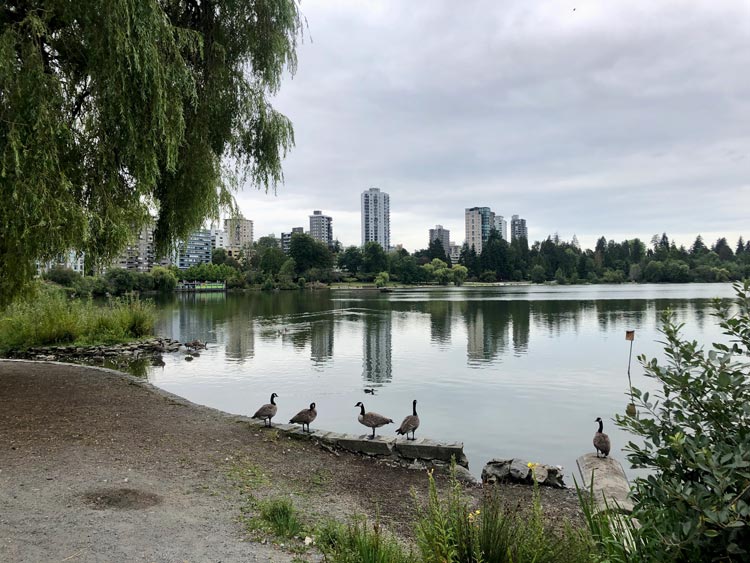
Stanley Park Vancouver
Archaeological evidence suggests a human presence in the park dating back more than 3,000 years. The area is the traditional territory of many different coastal indigenous peoples.
Stanley Park was officially opened on Sept. 27, 1888, named after Lord Stanley, 16th Earl of Derby, the governor general at the time (and who is best known today for having donated the Stanley Cup that was later handed down to the National Hockey League).
The park was designated a National Historic Site of Canada by the federal government in 1988.
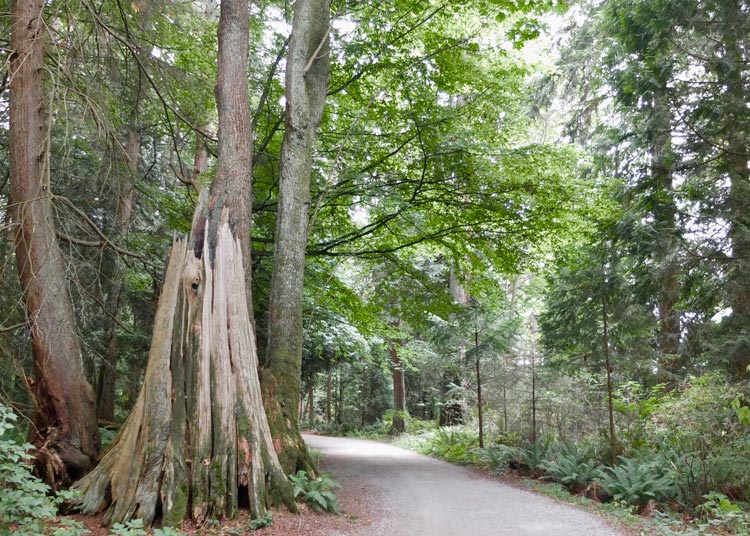
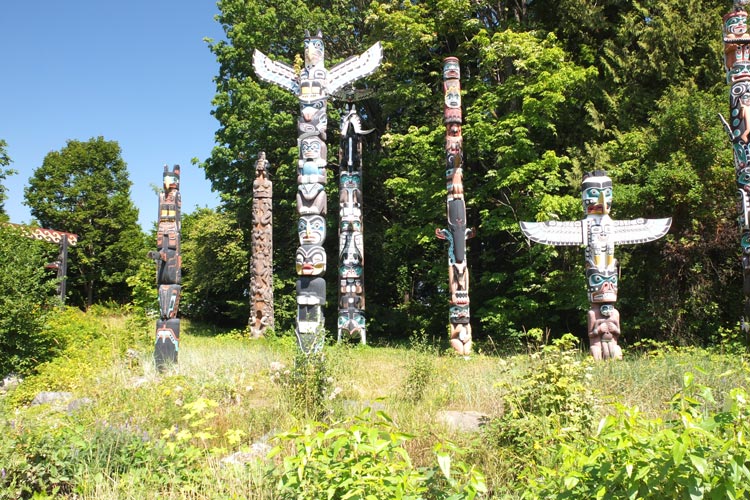
Totem Poles at Brockton Point
A collection of totem poles in Stanley Park started in the 1920s when the Vancouver Parks Board initiated buying them, thinking they would eventually build a replica First Nations village in Stanley Park.
Some of the original totem poles were carved as early as the 1880s. The First Nations Totem Poles in the park are the most-visited attraction in Vancouver and possibly all of Canada.
The largest group of Totem Poles along with three welcome gateways are located in a beautiful meadow at Brockton Point.
Totem poles are sculptures carved from western red cedar and represent stories or important events. These totems are used as a way to record the history and legends of the tribes, and each figure on the totem represents part of a story.
Figures on a totem pole are not gods to be worshiped. Instead, they represent traits and characteristics each clan or story embodies.
In Stanley Park, totem poles of various tribes stand on the traditional territory of the Coast Salish people, among then the Squamish, Tsleil-Waututh and Musqueam First Nation people of the Pacific northwest coast that have lived in this area for millennia.
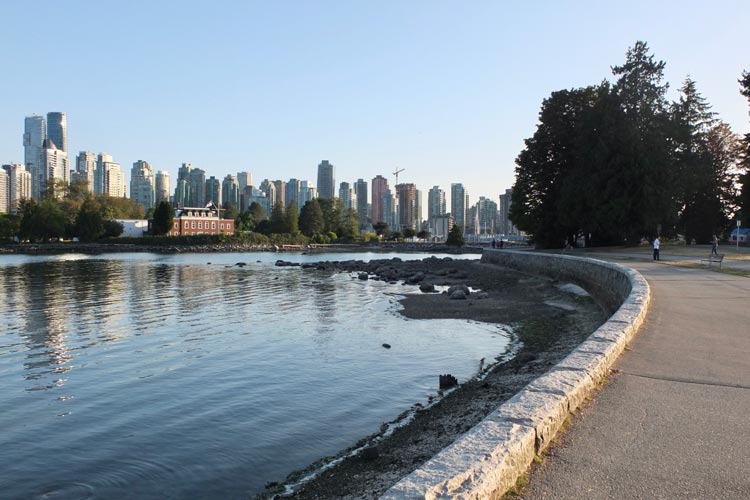
The Seawall in Stanley Park
Surrounded almost entirely by water, a seawall acts as an important perimeter while being one of the most picturesque paths imaginable. The seawall in Stanley Park is one of the most-used features of the park by locals and tourists alike.
No matter the weather, there will always be people walking, jogging, rollerblading or cycling along this scenic, paved pathway with stunning views of the city, northern mountains and Lion’s Gate Bridge.
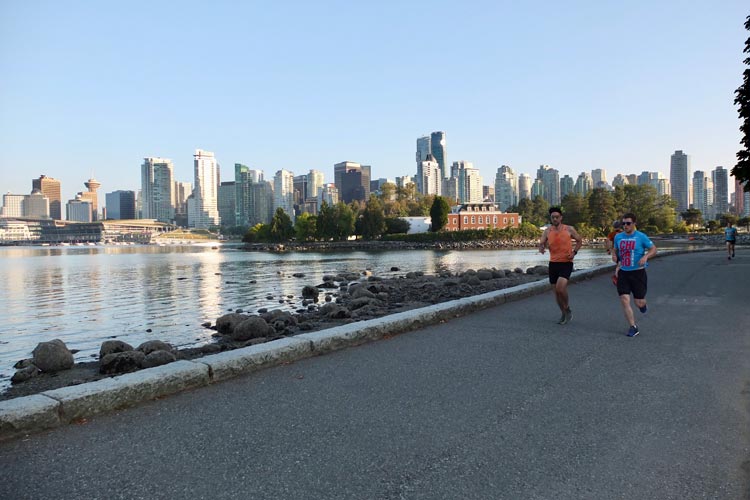
Stanley Park History
The massive stone block structure lines an impressive 9.5-mile paved route that loops around the park, skirting the entire inner waterfront. Construction of the seawall began in 1917 around the perimeter of Stanley Park with the goal of staving off erosion, taking 60 years to complete.
James “Jimmy” Cunningham, a master stone mason, dedicated his life to the construction of the seawall from 1931 until his retirement. Much of the work had to be done at night to take advantage of the low tides, and it is said that Cunningham was often observed supervising the crew in his pajamas.
Cunningham continued to return to monitor the wall’s progress, until his death at 85. The paved pedestrian pathway together with the walking and biking paths within Stanley Park add up to more than 40 miles of forested trails that wind through the park’s interior.
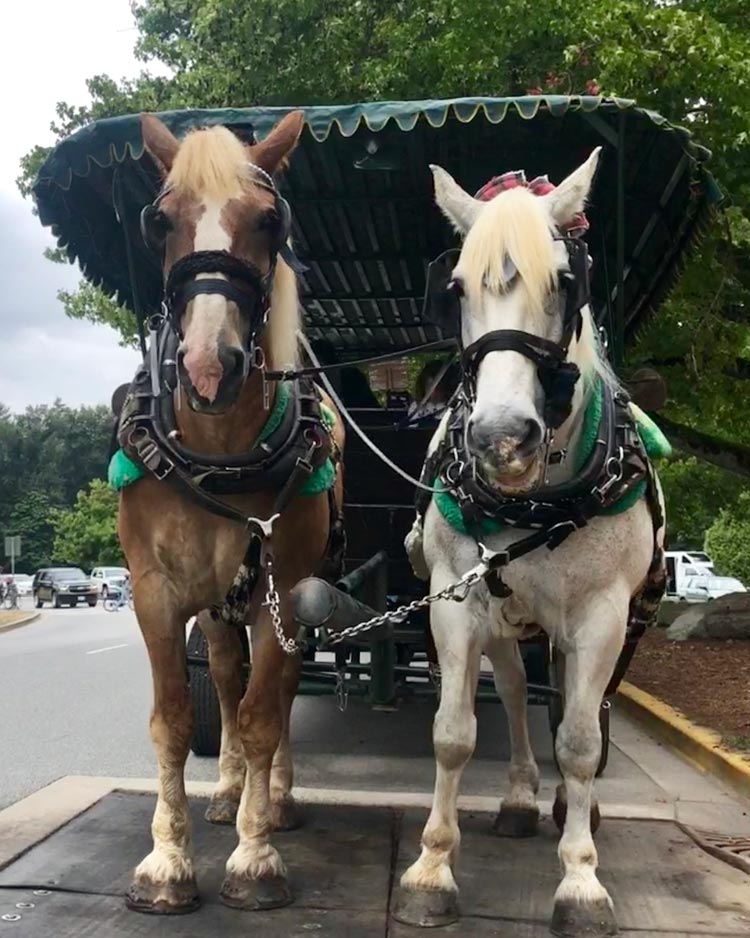
Stanley Park Stables
Horses have been featured in Stanley Park for well over a century. At first, the miners and loggers used them for hauling and clearing trails. In fact, some of the park’s existing trails were cleared by logging companies. A century later, the clip-clop of horses still echoes in the park.
A team of Percheron horses, named Roy and Sam, led my carriage tour meandering through the natural beauty of the park, pulling the colorful tram designed with the comfort of the horses in mind.
The Stanley Park Stables are home to Clydesdales, Belgians and Percheron draft horses known for their impressive size, intelligence and willingness to work.
These gentle giants, with feet the size of frying pans, consume around 60 pounds of hay and oats and 26 gallons of water per day.
They typically work two to three days a week in the park and vacation on a farm in the Fraser Valley during the off-season. A guide narrates the one-hour horse-drawn tour that highlights some of the iconic areas of the park, with a photo stop at the totems at Brockton Point.

Brockton Point Lighthouse
The lighthouse was originally established at this location in 1890, the most easterly point of Stanley Park overlooking Coal Harbor. A square tower, painted white with a red horizontal stripe, was constructed in 1914. The lighthouse was de-activated in 2008.
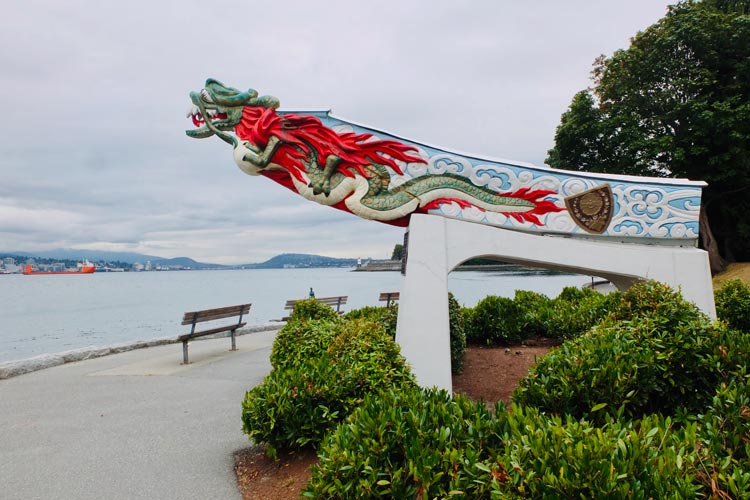
Empress of Japan Figurehead
This figurehead adorned the ship, RMS Empress of Japan, known as the “Queen of the Pacific.” Built in England circa 1890, the ship was designed to accommodate 770 passengers.
The Empress of Japan made about 400 crossings between 1891 and 1922 on the trans-Pacific route between the west coast of Canada and the Far East.
The ship was originally outfitted with an ornate dragon figurehead (probably carved in Japan), that was rescued when the ship was salvaged, restored and displayed in Stanley Park.
The wooden figurehead was deteriorating and replaced with the fiberglass replica (circa 1960) we see today. The original was again restored and is permanently displayed inside the Maritime Museum.
Vancouver Aquarium
The Vancouver Aquarium was formed as the Vancouver Public Aquarium Association in 1951. Canada’s first public aquarium, it is home to thousands of ocean species and aquatic life.
One of the founding principles of the aquarium was to attain the highest possible standard of animal care that provides informative and educational guest experience. In 1975, it became the first aquarium accredited by the American Zoo and Aquarium Association.
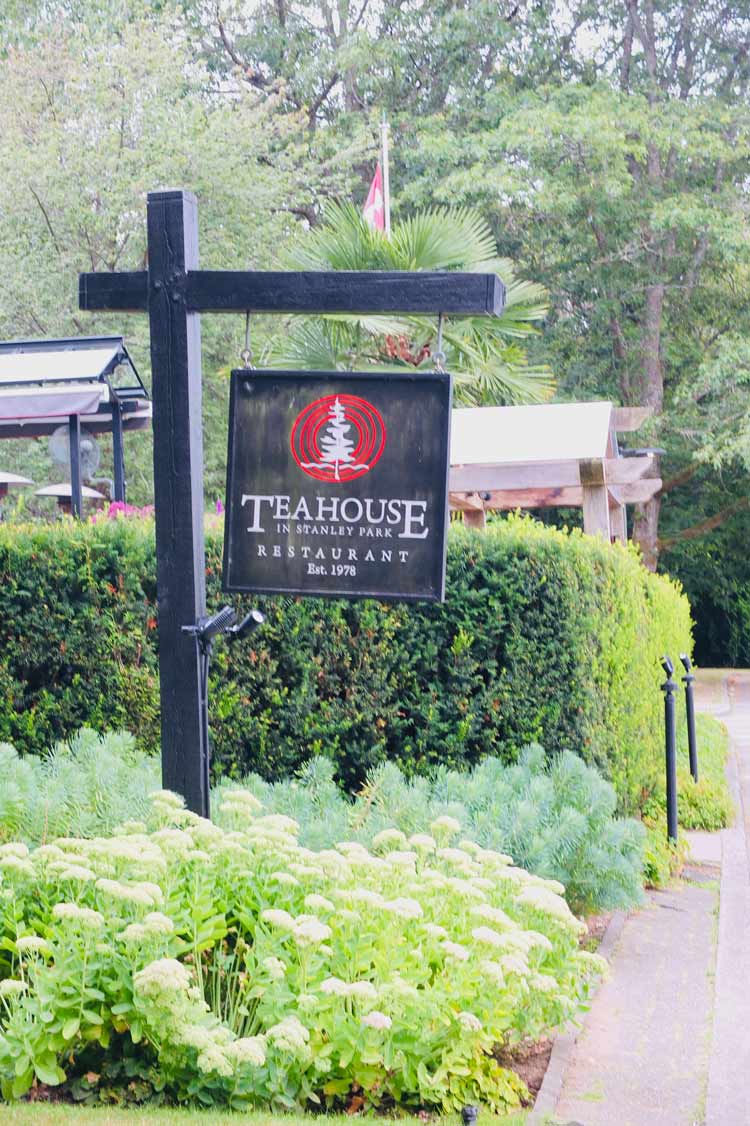
Teahouse in Stanley Park
A former garrison and officer’s mess during World War II, the Teahouse in Stanley Park is steeped in history. Post-war, the house served as a military residence, later opening as the Ferguson Point Tea Room during the summer.
The house fell into a state of disrepair in the 1970s and later was renovated, reopening in 1978 as the Teahouse Restaurant. More than 35 years later, the Stanley Park destination dining spot is still going strong.
Diner still frequent the tea room, conservatory and, on fine days, the patio where, if you are lucky, you will enjoy dinner with one of Vancouver’s most spectacular sunsets from the location at Ferguson Point.
A quick walk just outside the Teahouse, and you’re at English Bay, where tourists and locals alike gather for the evening twilight display featuring a stunning mountain backdrop.
Stanley’s Bar and Grill
Stanley’s Bar and Grill with large outdoor patio is in the Stanley Park Pavilion, a circa 1911 architecturally historic building nestled between the Rock Garden and the Rose Garden.
Surrounded by the natural beauty of the gardens, the restaurant offers visitors a welcome respite after a day exploring Stanley Park.
When you are sitting on the patio, you almost feel like you are in the forest because of the tall trees all around. Designed to resemble a Swiss chalet, this rustic log and stone building originally housed the Vancouver Park Board offices.
Over the years, it has been used for formal occasions including a reception given by the Prince of Wales in 1919 for the families of soldiers killed during World War I.
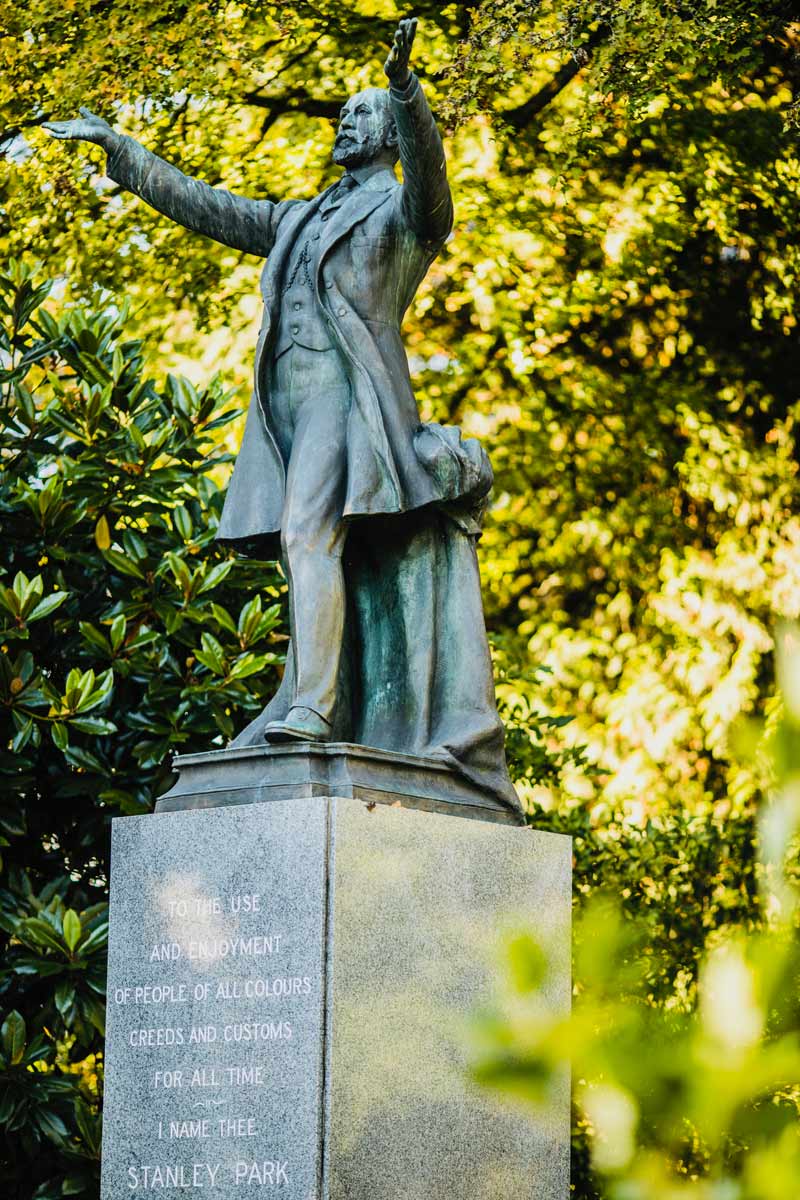
Lord Stanley Statue
The statue of Lord Stanley is located near the Coal Harbour entry to the park. Although Stanley Park was dedicated on Oct. 29, 1899, it was many years until this statue of Lord Stanley was sculpted and unveiled with great ceremony in 1960. An observer at the dedication of the park in 1899 wrote:
Lord Stanley threw his arms to the heavens, as though embracing within them the whole of 1,000 acres of primeval forest, and dedicated it “to the use and enjoyment of peoples of all colours, creeds, and customs, for all time. I name thee Stanley Park.”
With unforgettable views of ocean, mountains and city skyline, Stanley Park is a treasure for all time. For these reasons and more, this tranquil oasis is the ideal urban escape, and a perfect way to spend a day in Vancouver.
Things to Visit in Stanley Park
Stanley Park Seawall
https://vancouver.ca/parks-recreation-culture/seawall.aspx
Stanley Park First Nations Totem Poles
http://stanleyparkvan.com/stanley-park-van-attractions-totem-poles.html
Stanley Park Aquarium
https://www.vanaqua.org
Stanley Park Horse Drawn Carriage Tours
http://stanleypark.com
Teahouse of Stanley Park
https://www.vancouverdine.com/teahouse/
Stanley’s Bar & Grill at the Pavilion
https://stanleyparkpavilion.com/stanleys-bar-and-grill/
Author Bio: Sharon Kurtz is a freelance travel writer and tour leader for Women-traveling.com. She shares her passion for travel and food by exploring unique customs, cultures and flavors at home and around the globe. While Dallas is home with her husband and three dogs, her carry-on is always packed ready for the next adventure. Follow her travels on Instagram @Shar_Kurtz and facebook.com/sharonkkurtz
